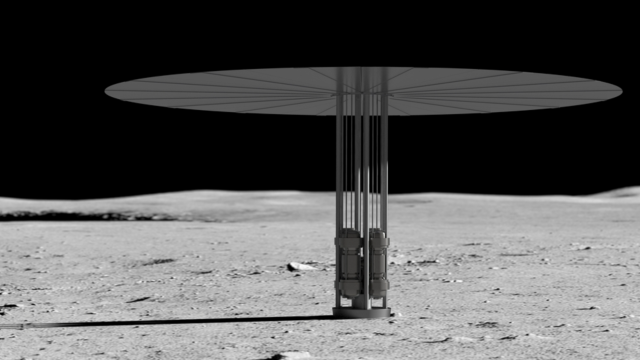NASA is in the process of seeking out industry partners to help establish nuclear fission power plants on the moon and Mars for deeper space exploration in the future. The proposal outlines the creation of a 10-kilowatt class fission surface power system, with plans for it to be built and launched by 2026.
According to Anthony Calomino, NASA’s nuclear technology portfolio lead, the system will be developed, fully manufactured and tested on Earth for deployment to the moon with minimal assembly required. Once completed, it’s set to be attached to a lunar lander and lowered slowly to the moon’s surface.
If the project proves successful, this technology will then be brought to other planets, with Mars being a primary candidate for the future.
The reason for building these outposts would be to produce large volumes of electrical energy, which allow the creation of manned outposts in space.
“Four units, providing 10 kilowatts of electrical power each, would provide enough power to establish an outpost on the moon or Mars,” Calomino told CNBC. “The ability to produce large amounts of electrical power on planetary surfaces using a fission surface power system would enable large-scale exploration, establishment of human outposts, and utilisation of in situ resources, while allowing for the possibility of commercialisation.”
[related_content first=”1527880″]
One of the major partners currently working with NASA is the Idaho National Laboratory, a research facility focussing on delivering the goal of a nuclear power facility on the moon. Scientists there believe six years is a realistic timeline, and are currently working on exploring how power conversion, heat rejection and space flight technology can enable NASA’s plans.
Essentially, the planned reactor will operate via a nuclear core that generates heat for transfer to the power conversion system. This energy can then be converted to electricity and used to power any number of devices, including home bases for astronauts venturing into deep space.
Over 22 companies have responded to the open call for industry interest, but while they’re said to have experience in the aerospace, nuclear and power conversion sectors, only a handful (Blue Origin and BWXT) have been named.
At this stage second round proposals will be launched in early 2021, so while we’re still a long way off knowing how NASA’s proposal will pan out, there’s plenty of excitement to look forward to. Space travel is still in its relative infancy, and there’s so much left to explore.
NASA’s nuclear power plans could be key to unlocking the next stage of space exploration.
